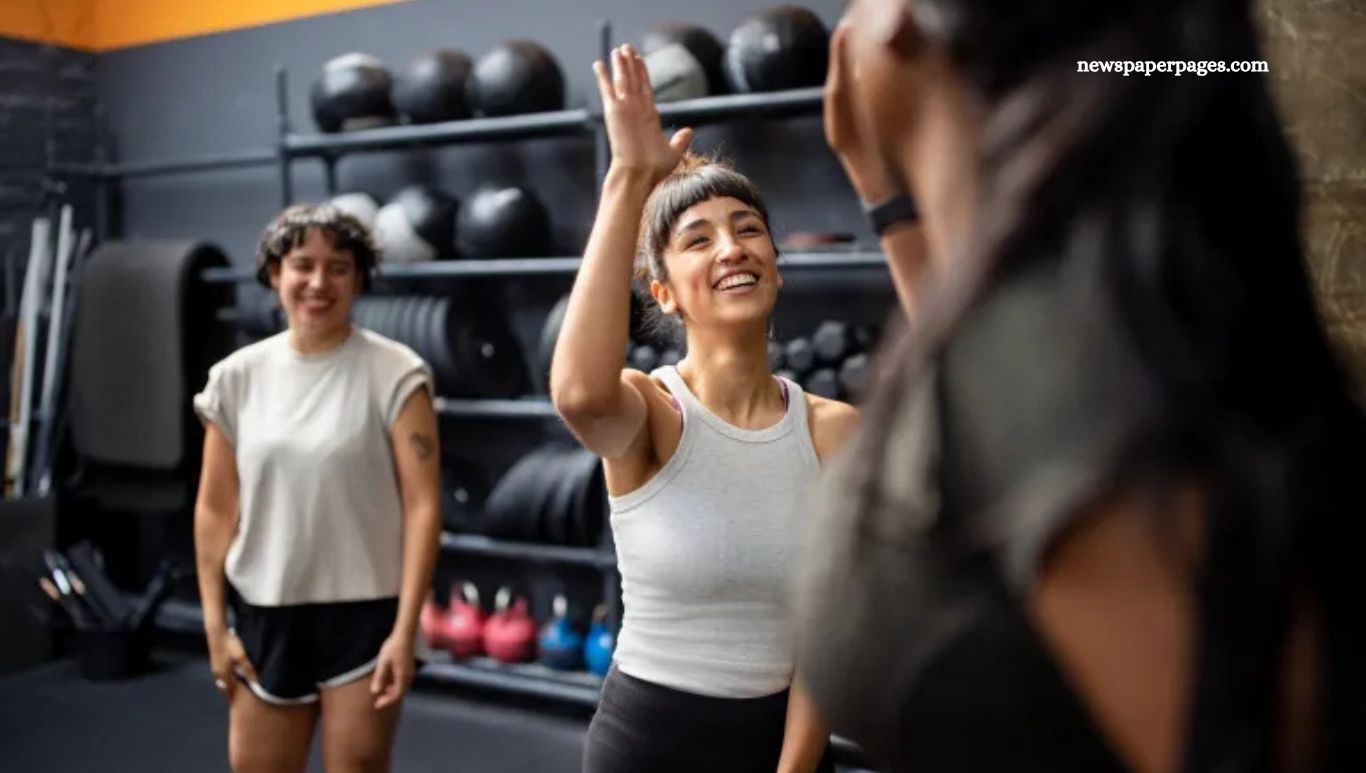Feeling intimidated by the gym, nervous about trying a new yoga studio, or discouraged after a group fitness class? You’re not alone. Unwelcoming instructors, influencer filming, and non-inclusive atmospheres have made many people feel out of place in fitness spaces.
Take one viral (and now deleted) TikTok, where a Pilates instructor claimed, “If you’re 200 pounds, you shouldn’t be in a Pilates class.” Comments like these highlight the kind of body-shaming that deters people from pursuing fitness—despite knowing health isn’t limited to a specific size.
Unfortunately, these aren’t isolated incidents. Social media is full of similar stories: a “moderately fit” woman left a dark, poorly instructed group class feeling lost; a Reddit user found their so-called beginner class anything but; and a Black YouTuber shared how a Pilates instructor made racially insensitive remarks during class.
So, should you give up on the gym altogether? Absolutely not. While some fitness spaces fall short, others prioritize inclusivity and support. Below, fitness pros reveal what makes a truly welcoming gym—and how to spot one.
The 8 best inclusive gyms to try out
Looking to dance through a high-energy Zumba class, power through a rowing circuit, or unwind on a yoga mat? These top inclusive gyms offer supportive, judgment-free spaces where everyone can move, sweat, and thrive—no matter their fitness journey.
Read More: Sculpt Strong Glutes: 9 Powerful Exercises for Shape and Strength
The YMCA
Rachel Trotta, CPT and founder of Rachel Trotta Training and Coaching, calls the YMCA her “absolute favorite gym.” “I’m a member myself, and I love the diversity and welcoming atmosphere—not just for me, but as a positive example of community for my daughter,” she shares.
The YMCA stands out for its inclusive environment, welcoming people of all ages, genders, and backgrounds. With thousands of locations nationwide, accessibility is a major perk. However, membership fees can be on the higher side depending on your plan, and many locations have limited weekend hours—though financial assistance is often available.
Adaptive Training Foundation
Based in Texas, the Adaptive Training Foundation is a groundbreaking non-profit gym created for wounded veterans and individuals with physical disabilities. “At this gym, your race, gender, age, or ability doesn’t define you—if you have a body, you’re an athlete,” says founder David Vobora, a retired NFL linebacker.
Accepted members train for free, making it an incredible resource for those needing adaptive fitness support. Participants join small group classes that foster connection, community, and personalized care.
While its mission is powerfully inclusive, the gym currently operates from a single location. Additionally, its staff largely represents conventional fitness ideals, which may feel less relatable to some members.
Club Pilates
Prefer a Pilates-focused experience? Club Pilates has brought the practice into the mainstream in a way that feels welcoming and accessible, says Tianna Strateman, a veteran instructor with over 15 years of experience and current president of Club Pilates. She describes the studio as a supportive space for all ages and skill levels, featuring a tiered class system, beginner-friendly intro sessions, and encouraging staff.
“I love how our instructors structure each class with care while personalizing it to meet everyone’s needs,” Strateman shares. “Our culture truly sets us apart.”
With numerous locations nationwide and a wide range of class options, Club Pilates makes it easy to find a class that fits your pace. However, instructor feedback can be hit or miss, and coaching quality varies by location—making it common for members to stick with their favorite teachers.
LionHeart Gym
LionHeart Gym in California earns its spot for its community-first approach. “Our coaches know your name, meet you where you are, and offer modifications without making you feel singled out,” says co-owner Chelsea Kershaw. “Unlike many high-intensity gyms, LionHeart prioritizes empowerment over ego.”
Offering a mix of cardio, strength, and mobility classes, the gym supports diverse fitness goals while fostering a supportive, non-intimidating atmosphere. A post-workout coffee bar adds a social touch for members looking to connect beyond class.
The main downsides? It’s currently a single-location gym, and the staff tends to reflect traditional fitness stereotypes, which may not feel inclusive to everyone.
Pure Barre
Tianna Strateman praises Pure Barre for its consistent, low-impact workouts that are both accessible and beginner-friendly. She highlights the strong sense of community—especially among women—and the caring, inclusive approach of the instructors.
“I’ve taken classes at multiple locations and always found the teachers supportive, offering modifications and encouragement,” Strateman says. “The structure promotes steady progress without pressure, which is ideal for those easing back into fitness.”
With locations across the country and beginner intro classes, Pure Barre is a great entry point for many. However, it’s not ideal for boosting cardio endurance, and the cost of classes and memberships can be a drawback for some.
High Fives Foundation—CR Johnson Healing Center
If you’re recovering from a major injury, the High Fives Foundation’s CR Johnson Healing Center in California could be a perfect fit. “Their mission is to transform adventure sports by expanding what’s possible for those with life-changing injuries,” says David Vobora. The center empowers injured athletes, veterans, and individuals with disabilities to engage in sports like skiing, backcountry skiing, and snowboarding.
The program offers specialized support and adaptive training in a highly motivating environment. However, it’s primarily for those with serious injuries, and with only one location, access is limited for many.
YogaSix
If you’re searching for a welcoming yoga studio, YogaSix is a great option with locations across the country. According to Tianna Strateman, the studio’s beginner-friendly vibe and accessible class names—like “Yoga 101” and “Restore”—help demystify yoga for newcomers. The focus is on feeling good in your body rather than perfecting poses.
Strateman also praises the studio’s relaxed, non-performative atmosphere, where instructors offer modifications, respect individual needs, and promote body neutrality—encouraging acceptance over judgment. “I always leave feeling calm and grounded,” she says.
That said, classes may feel too gentle for experienced yogis, and limited time slots mean it’s best to book early.
[solidcore]
Inclusivity and empowerment drive everything at [solidcore], the Pilates-inspired fitness studio. Led by CEO Bryan Myers, a Black LGBTQ+ executive, these values shape every location nationwide.
“Our studios focus on strength over appearance, featuring signature blue lighting and a strict no-photos policy,” says Triana Brown, director of talent and product development. Coaches use body-neutral, affirming language to support every individual—regardless of size, gender identity, or experience.
[solidcore] offers beginner-friendly intro classes and a range of workouts varying in intensity, muscle focus, and duration. However, some mat Pilates sessions occur on concrete floors, and teaching styles can differ between instructors.
What to look for in an inclusive gym environment
No gym is perfect, but some show clear signs of being inclusive, welcoming, and healthy. Look for these subtle green flags before committing:
Authentic Diversity
An inclusive gym reflects real diversity among instructors, staff, and members—across body types, races, genders, ages, and abilities. Tianna Strateman says, “Representation should be genuine and part of the culture, not just marketing.” For Black woman Triana Brown, seeing someone who looks like her sends a powerful message: she belongs.
Normalizing Modifications
Feeling like you can’t do the “right” move in class? A truly inclusive instructor normalizes modifications without judgment. Strateman explains that offering multiple ways to perform exercises shows awareness of different abilities.
No Toxic Messaging
Watch out for signs or slogans that promote unhealthy body image or pressure, like “no pain, no gain” or weight-loss challenges. Rachel Trotta says inclusive gyms avoid these and don’t push harmful mindsets.
Helpful “How-To” Signs
Good gyms provide clear instructions on equipment use and polite reminders about gym etiquette, creating a respectful environment.
Respect for All Levels
Inclusive gyms celebrate all fitness stages. David Vobora calls it a tribe that supports growth without judgment—cheering on beginners and explaining moves kindly.
Celebrating Individuality
Every workout looks different. Staff use empowering, body-positive language, encouraging members to “move in a way that feels right today” or “honor where you are.” Vobora adds, “There’s no single ‘right way’ to move or train.”
Intentional Atmosphere
Inclusivity extends to small details like playing clean music and fostering community. Brown highlights how coaches at [solidcore] connect with clients before and after class, turning workouts into shared, meaningful experiences.
Frequently Asked Questions
What makes a gym truly inclusive?
An inclusive gym welcomes people of all ages, body types, genders, races, and abilities. It offers modifications without judgment, fosters a respectful environment, and promotes diversity authentically among staff and members.
How can I tell if a gym is welcoming before joining?
Look for signs like diverse staff and clients, supportive instructors who normalize modifications, absence of toxic messaging, and clear, respectful communication. Visiting the gym for a trial class or tour can also help.
Why is diversity important in a gym setting?
Diversity creates a supportive environment where everyone feels seen and valued. It encourages respect for different fitness levels, body types, and backgrounds, making workouts more enjoyable and motivating.
Are modifications in workouts common in inclusive gyms?
Yes! Inclusive gyms normalize modifications to ensure everyone can participate comfortably, regardless of ability or fitness level.
What kind of language do inclusive gym instructors use?
They use body-neutral, affirming language focused on how movement feels rather than looks, such as “move in a way that feels right for your body” or “honor where you are today.”
How do inclusive gyms handle negative or toxic fitness culture?
They avoid slogans or messaging that shame or pressure members and instead focus on empowerment, positivity, and realistic fitness goals.
Are inclusive gyms more expensive than traditional gyms?
Costs vary widely. Some inclusive gyms offer scholarships or sliding scales, but others may be pricier due to specialized programs or boutique settings.
Can beginners feel comfortable at inclusive gyms?
Absolutely. Inclusive gyms respect and support all fitness levels, often providing beginner-friendly classes and patient, encouraging instructors.
Do inclusive gyms have specific hours or class types?
Many offer a variety of class options and flexible schedules, but it’s best to check individual gym offerings, as hours and classes can vary.
How can I find an inclusive gym near me?
Research local gyms online, read reviews, ask about diversity and inclusion policies, and consider trial visits to see if the environment feels supportive and welcoming.
Conclusion
Finding the right gym goes beyond just equipment and classes—it’s about feeling seen, supported, and empowered in a space that respects your unique journey. The best inclusive gyms embody subtle yet powerful green flags: authentic diversity, normalized modifications, positive messaging, respect for all levels, and a welcoming atmosphere. By recognizing these signs, you can confidently choose a fitness community that truly embraces everyone. Remember, your fitness journey deserves a space where you belong, grow, and thrive—no exceptions.

